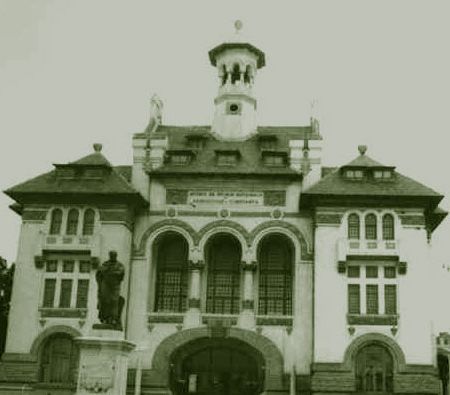Museum of Archeology Constanta

Constanta city presents the most important values of material and spiritual culture of the old Tomis and numerous other discoveries in the territory of Dobrogea county. In the museum’s courtyard are exposed sarcophagus dating from sec. I-III, bases and trunks of columns.
In the halls of the museum can be seen remarkable piece of Neolithic cultures Hamangia and Gumelnita, many agricultural items from the slave-owning, Amfora Greek Roman coins, objects used in commerce.
Also presented are fragments of architectural monuments, the statues discovered at Tanagra, Callatis. Many pieces are statues representing different deities: Tyche (Fortuna), goddess of luck and fate, god Pontos, god of the sea, Hecate goddess, Dionysos god, Hermes, Mithras and bas-reliefs representing the thracian knights.
The snake Glycon makes a great impression, a splendid representation in marble of an animal with fantastic body snake and mammal snout. Many pieces, presented in the museum, iluustrated the beginning of feudalism era in Dobrogea, the vestiges discovered at Murfatlar, Castelu, Dinogetia, Limanu, Harsova, Rasova. The museum has a rich lapidarium and a numismatic collection with a great value; the coins have engravated figures of Scythian kings, unique in the world.
Roman mosaic
Behind the building of Constanta County Council during 1958-1959 were discovered monumental building structures from III-IV centuries. The building structures are along the sea for about 100 m. The thickness of party wall is about 2m, the hight is over 6m and were placed on a support of 3m widht and over 2 m deep, made of rocks.
The façade walls were plated with white and colored marble, preserved today only fragmentary.
The floor of the building was made of an exceptional polychrome mosaic, decorated with geometrical and plant motifs. Initially, the mosaic had an area of 2000 square meters, only half part has been preserved in good condition, still a quarter degradated was recovered.
Under the terrace with mosaic were discovered vaulted rooms, which served as a warehouse of goods. Above the entrance to one warehouse was engraved the name of Hermes, god of commerce.
The Roman wall
The Ancient city was situated on the peninsular part, built in 15-30m above sea level, being away from the surprise attacks from the sea. To have a better safety both in the north and in the north-west, the Romans raised in the III century a strong defense wall above sea level. Its traces were discovered in Republicii Avenue and lowering to the old harbour.

































